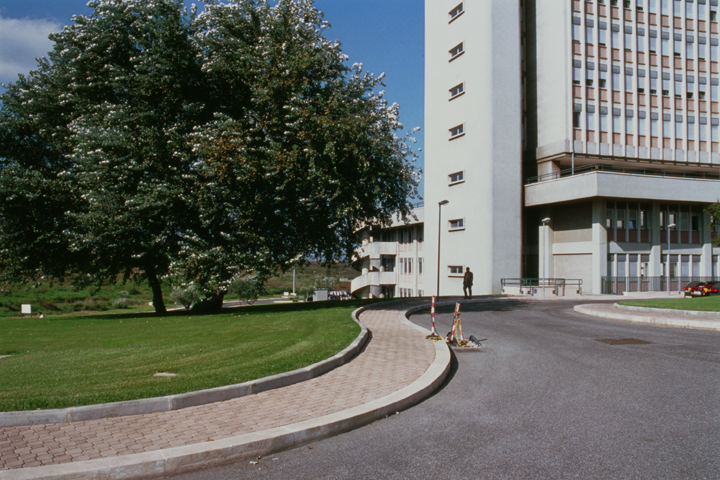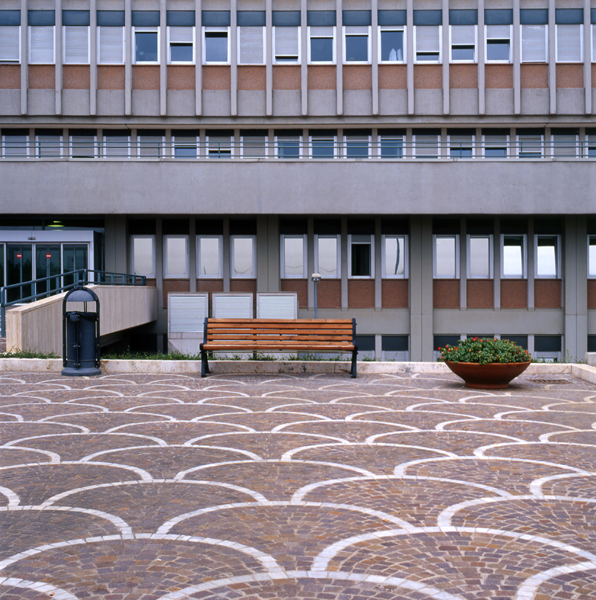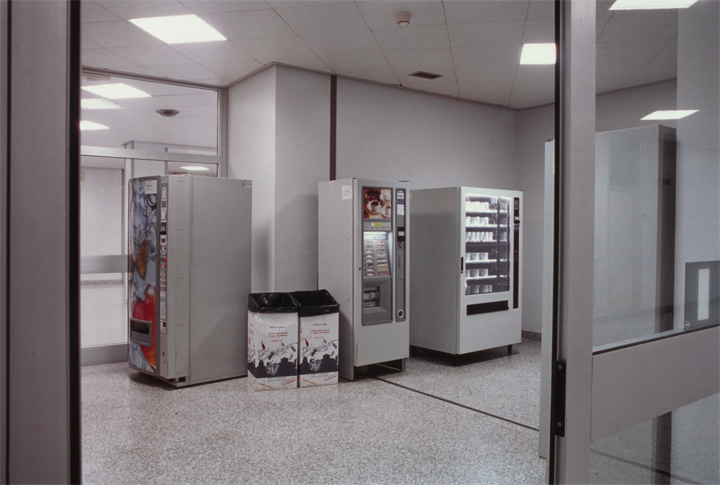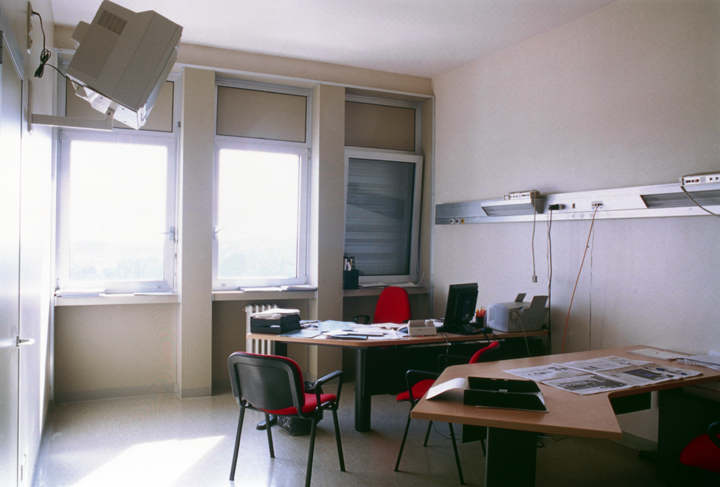Curated by Associazione Culturale Zerynthia, Ospedale Sant’Andrea, Rome, 2002
Love stories
Storie d’amore is a series of photographs showing places of the Sant’Andrea Hospital in Rome where love stories began between employees. Each image is accompanied by a dedication to the couple concerned.
The artist made use of the circulating power of gossip to trigger a mechanism capable of getting the entire hospital community involved. The gossip that made it possible to identify the places of interest also set off new instances: the photograph of one couple generated word-of-mouth communication that led to the communication of other stories, identifying other places, and so on. “Thanks to the unpredictable spread of the news of the work – the artist says – I met couples who offered their cooperation: I asked them where their ‘amorous’ gazes first met, and the place they indicated became the subject of the photograph”.
The invitation extended to the employees to reconstruct “joyful” narratives that emerged in a setting usually marked by an atmosphere of suffering and pain allowed the work to self-generate: “to activate the project – the artist explains – I had to touch the sensibilities of those who ‘live’ inside the hospital, from the director to the nurses, and this is why I chose love stories as the theme; I knew that would be a good key, capable of getting them involved, because they would be the protagonists” [Barbara Casavecchia e Viktor Misiano, All’aperto. Alberto Garutti, Silvana Editoriale, Milan, 2009].
Storie d’amore is a work in which theory generates practice that generates new theory. “The work is born and constructs its meaning – the artist says – on a connective tissue composed of a dense network of information, thanks to the cooperation of many people. But it is above all a work on method, on the thin, often indistinguishable borderline between art and the reality of life. Interpersonal encounter sets the process in motion and, at the same time, is an integral part of it; the photographs are works, and at the same time they are tools to construct the invisible framework of places and gazes that constitutes the life of the building. So the work is all this, put together, and it extends basically just like the sound of the voice, of people whispering…” [Hans Ulrich Obrist, “Alberto Garutti”, in Domus #901, March 2007, p. 118].



